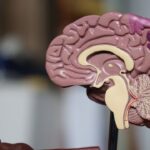Keep calm and carry on!
Acquire the English language, don’t learn it.
Please read the following article about English language acquisition.
Some people use the term of language acquisition for all the phases that lead to language fluency, including learning to read and write. Others use the term of language learning even for babies and very young, preschool children.
So what is it? Let’s start with how children acquire language.
Children acquire language through a natural, subconscious process during which they are unaware of grammatical rules. This happens especially when they acquire their first language(s). They repeat what is said to them and get a feel for what is and what is not correct.
In order to acquire a language, they need a source of natural communication, which is usually the mother, the father. Children who grow up with multiple languages, will acquire these languages in the most natural way. They will repeat what they hear, try out sound chains until they make sense (i.e. others will understand their meaning), and they will use them purposefully in their communication.
We do not teach our children the first language(s)! We transmit our languages through verbal and non-verbal communication. We do not need to explain all the objects around us. We don’t need to show our child what an apple is and say “this is an apple”, or a cup “this is a cup”. We simply need to use our language like we always do and our children will acquire it by simple and regular exposure. We need to involve them in conversations with us – also non-verbal ones count! – and encourage them to use language.
What is language learning?
Language learning, on the other hand, is the result of direct instruction in the rules of language. Language learning is not an age-appropriate activity for very young children as learning presupposes that learners have a conscious knowledge of the new language and can talk about that knowledge.
Language learners usually have a basic knowledge of the grammar of their first languages they acquired. They know the differences in intonation, the sound of words, what a grammatically correct word order is in a sentence in the language, that words can have multiple meanings.
When we learn a new language we have a deductive approach, we correlate words in Portuguese to words in English for example. This happens when we start being schooled in this language, when we learn to read and write. Reading and writing are not skills that come naturally. They are not intuitive. We need to learn that letters and words represent sounds, that by combining them we form words that have a meaning, which we can use to convey our thoughts. We learn that there are rules for each language, concerning the position of the words in a sentence, that one word can have many different meanings, depending on the context.
Principles and Action points for language acquisition.
I have listed the key principles and action points as a guide to language acquisition. Let’s go through them and afterwards look at some practical examples of how to apply this to your language goals.
Principles
- 1: Focus on language content that is relevant to you. Use Language you need.
- 2: Use your new language as a tool to communicate from day 1. Ask questions and repeat.
- 3: When you first understand the message you will unconsciously acquire the language this is called comprehensible input.
- 4: Physiological training.
- 5: Psycho-physiological state matters If you are happy you will learn.
Try to Ignore ambiguity.
Actions
- 1: Listen a lot (brain soaking) Music podcasts.
- 2: Focus on getting the meaning first (before the words)
Raining Cats and dogs. Body language. - 3: Start mixing 10 verbs 10 nouns 10 adjectives =1000 words.
- 4: Focus on the core 1000 words 80% of conversation 3000 words 98% of conversations.
So always mix words and add words. - 5: Get a language parent. Someone will communicate with you like me.
- 6: Copy the face Observe language copy how people talk.
- 7: Direct connect” to mental images. Try to use images, to remember.
Source: TEDx Talks Chris Lonsdale
In practise: It’s raining cats and dogs!
Expressão idiomática:
Algo que se diz quando chove intensamente.
Hoje vai chover canivetes.
Principle 3: When you first understand the message, you will unconsciously acquire the language.
Action 2: Focus on getting the meaning first before the words.
Action 7: Direct connect to mental images. Images of cats & dogs falling from the sky.

The Five Principles.
1: Focus on language content that is relevant to you. Use Language you need.
Why do you want to learn to speak a second language?
Do you want to learn Italian so that you can understand opera? If so, then concentrate on words and phrases that you would hear in Puccini’s operas.
Do you want to learn to speak Mandarin so that you can communicate with your business partners in China? Then focus on learning words and phrases in Mandarin that are related to business.
2: Use the new language as a tool to communicate. Instead of simply learning the language in an academic setting, put yourself in situations which force you to use the language in order to be able to communicate with others.
3: When you first understand the message, you will unconsciously acquire the language. When you’re first trying to learn a new language, instead of trying to understand the words that someone is using to talk to you, try to understand what they’re trying to say through their gestures, body language, and facial expressions.
That is, at first you don’t derive meaning from the language, but from the interaction.
This is something called comprehensional input, and it’s been well documented.
4: Learning a language is not about acquiring knowledge. Instead, in many ways it’s about physiological training.
First of all, we have filters in our brains that filter in sounds that we’re familiar with, and that filter out sounds that we’re not familiar with. And if you can’t hear it, you can’t learn it. Therefore, you have to continually listen to the sounds of the language that you’re trying to learn in order to train your brain to let in the new sounds.
In addition, talking requires using your facial muscles. You have 43 muscles in your face. You have to coordinate those muscles in a way that makes sounds that others can understand.
5. Your psychological state matters. If you’re sad, angry, worried, or upset, you’re not going to learn the new language. If you’re happy, relaxed, and curious, you’re going to learn the new language quickly. In addition, you need to be tolerant of ambiguity. At first when people speak to you in the language that you’re trying to learn, you’ll understand very little. But that’s OK.
The Seven Actions.
Based on the five principles that were explained above, there are seven actions that you need to take in order to learn a new language quickly and efficiently.
1. Listen; a lot. We call this brain soaking. It doesn’t matter if at first you don’t understand what you’re listening to. You’re listening to recognize patterns, words that repeat, and things that stand out. In addition, you’re listening to the rhythm of the language.
2. Focus on getting the meaning first, even before you get the words. From body language you can understand a lot of communication. You’ll be acquiring the language through comprehensional input.
3. Start mixing. If you know ten verbs, ten nouns, and ten adjectives in the new language, you can say 1000 different things. Language is a creative process. Look for ways to get your meaning across by using the words that you know.
4. Focus on the core. With every language there’s high frequency content. As an illustration, in English, one thousand words cover 85% of anything you’re going to say in daily life. Three-thousand words give you 98% coverage. All the other words in the English language are the icing on the cake.
5. Get a language parent. When you start learning a language your progress will probably look like the following:
- Week 1: Continually ask:
What is this?
How do you say . . .
Can you say that again?
Can you repeat that?
What does it/that mean?
Always ask these questions in the language that you’re trying to learn. - Week 2 and 3: You should be using very simple nouns, verbs, and pronouns “you”, “me”, “that”, “hot”, “give”.
- Week 4: You’re using glue words, such as “and”, “but”, “even though”, “therefore”. These words tie bits of language together so that you can make a more complex meaning. At this point you’re talking in the new language.
This is where you want to get a language parent. That is, someone who will treat you like a parent treats their child when the child is learning to speak. This language parent can recognize what you’re saying, even when others don’t understand. They create a safe environment for you, which makes you more confident in your ability to learn the new language.
The four rules for a language parent are the following:
- They will work hard to understand what you’re trying to say.
- They don’t correct your mistakes.
- They confirm understanding by using correct language.
- They use words that you know and also communicate with gestures and body language.
6. Copy the face. In order to learn to make the sounds that will allow you to speak the new language, you have to watch the faces of people who speak that language. How does their face move when they’re speaking? Mimic their facial movements.
7. “Direct Connect” to mental images. Most people learning to speak another language will make a list of words that they want to learn in their mother tongue, and next to each word they’ll place the equivalent in the language that they’re trying to learn. Then they just go over the list repeatedly in the hopes of memorising the words in the new language. This is very inefficient.
Everything that you know is an image inside your mind. For example, if you talk about fire you can smell the smoke, feel the heat, hear the crackling, and see the flames. What you want to do is to focus on the image that’s currently in your head for “fire” and create a new pathway that leads from this image to the word “fire” in the language that you’re trying to learn.
So I hope this helps you to focus on your language studies, remember persistence is the key, don’t give up and keep going, little wins every day build your confidence and give you a sense of achievement.
Jay Andrews.
Photo by Rumman Amin on Unsplash








